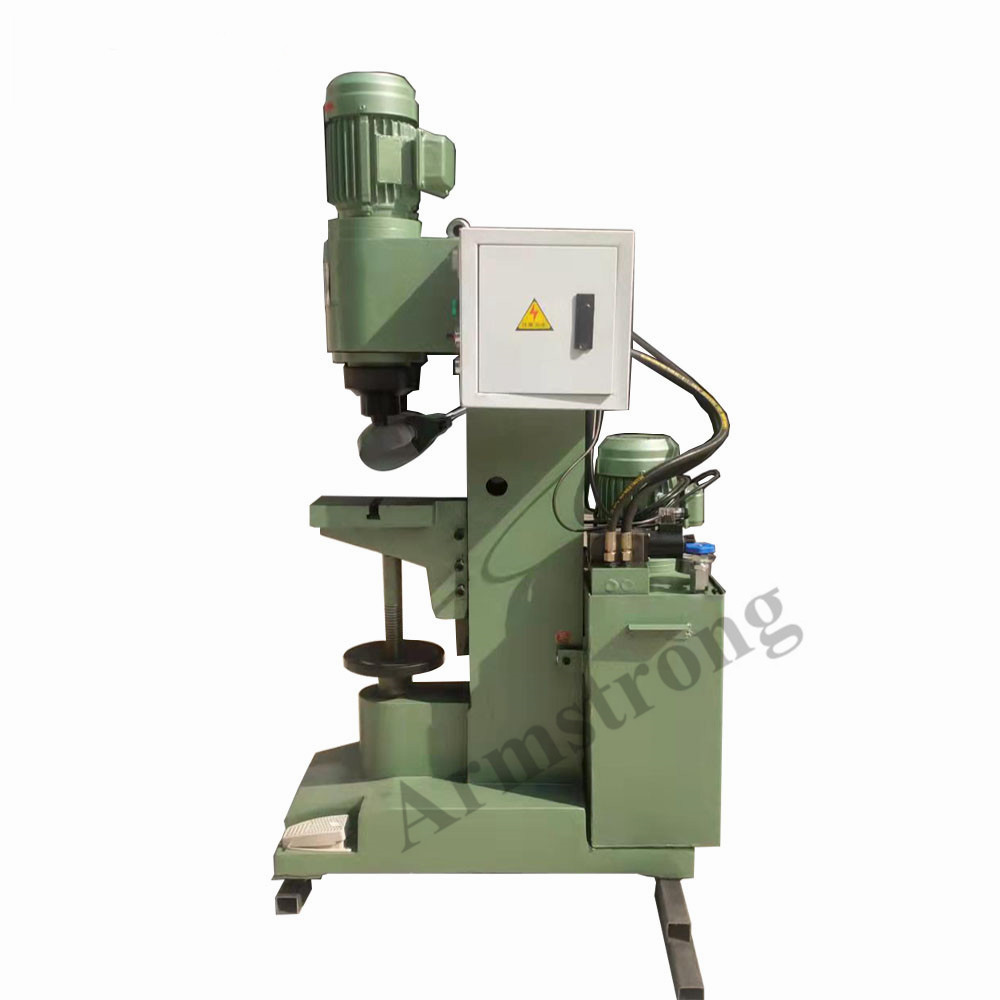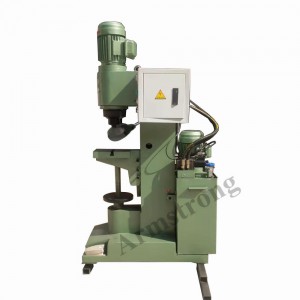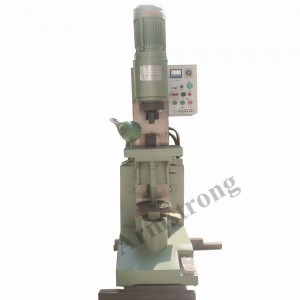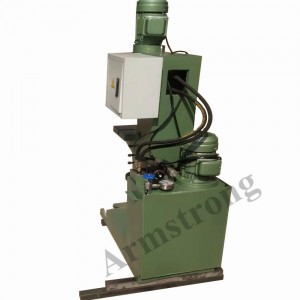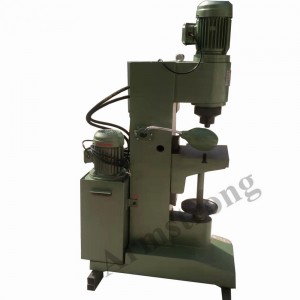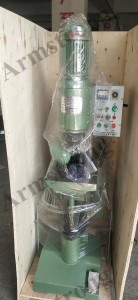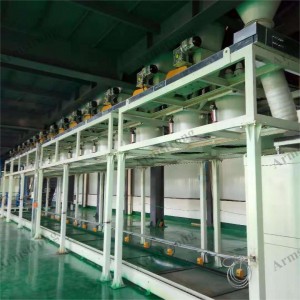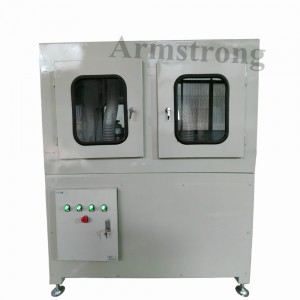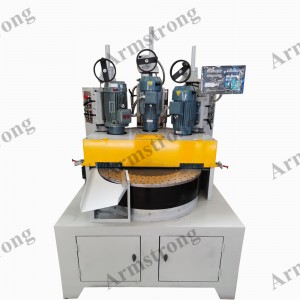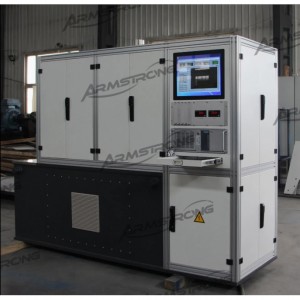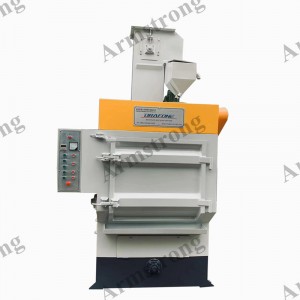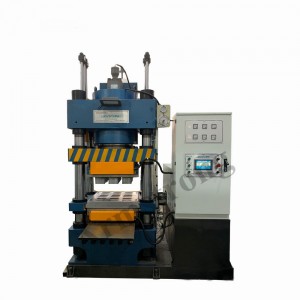Hydraulic Riveting Machine
1. Application:
Hydraulic riveting machine is a riveting machine that organically combines mechanical, hydraulic and electrical control technology. It is suitable for automotive, marine, bridge, boiler, construction and other industries, especially in the riveting production line of automotive girders. It is characterized by large riveting force, high riveting efficiency, low vibration, low noise, reliable riveting operation quality, and also reduces the labor intensity of workers. In the production process of brake pads, we need to rivet the shim on the brake pads, so the riveting machine is also an essential equipment.
The oil pressure system of the hydraulic riveting machine includes a hydraulic station and a hydraulic cylinder. The hydraulic station is fixed on the base, the hydraulic cylinder is fixed on the frame, and the clamping nozzle is fixed on the frame through an adjustable connecting rod. The clamping nozzle can clamp and position the rivets sent from the automatic feeding mechanism. The oil pressure system has low noise when in standby, which can save power consumption, reduce production costs, and has high work efficiency, good processing quality, and solid machine structure, The operation is light and convenient, which greatly improves the work efficiency.
2. Troubleshooting tips:
|
Problems |
Reason |
Solutions |
| 1. There is no indication on the pressure gauge (when the pressure gauge is normal). | 1. Pressure gauge switch not on | 1. Open the switch(Turn off after adjustment) |
| 2. Hydraulic motor reverse | 2.Change phase makes the motor consistent with the direction indicated by the arrow | |
| 3. There is air in the hydraulic system | 3.Operate continuously for ten minutes. If there is still no oil, loosen the lower cylinder oil pipe on the valve plate, start the motor and exhaust manually until the oil stops. | |
| 4. Oil inlet and outlet pipes of oil pump loose. | 4.Re install in place. | |
| 2. Oil exists, but no up and down movement. | 1.Electromagnet does not work | 1.Check the relevant devices in the circuit: foot switch, change-over switch, solenoid valve and small relay |
| 2.Electromagnetic valve core stuck | 2.Remove the solenoid valve plug, clean or replace the solenoid valve | |
| 3. Poor appearance or quality of the rotating head | 1.Bad rotation | 1.Replace the bearing and hollow shaft sleeve |
| 2.The shape of the rotating head is inappropriate and the surface is rough | 2.Replace or change the rotating head | |
| 3.Unreliable working positioning and clamping | 3.It is best to clamp the rotating head and keep it consistent with the center of the bottom. | |
| 4.Improper adjustment | 4.Adjust the appropriate pressure, handling quantity and handling time | |
| 4. The machine is noisy. | 1.The inner bearing of the main shaft is damaged | 1.Check and replace bearings |
| 2.Poor operation of motor and lack of phase of power supply | 2.Check motor and repair | |
| 3.The joint rubber of oil pump and oil pump motor is damaged | 3.Check, adjust and replace the adapter and buffer rubber parts | |
| 5. Oil leakage | 1.The viscosity of hydraulic oil is too low and the oil is deteriorated | 1.Use new N46HL |
| 2.Damage or aging of type 0 sealing ring | 2.Replace the sealing ring |

